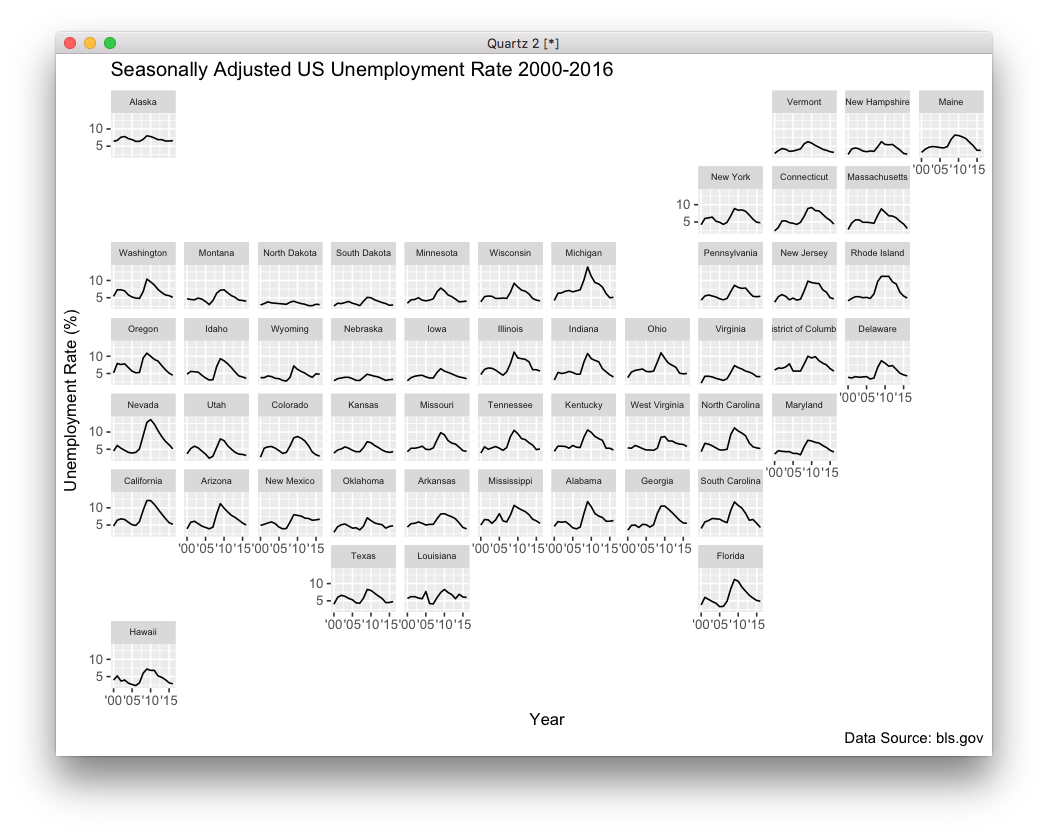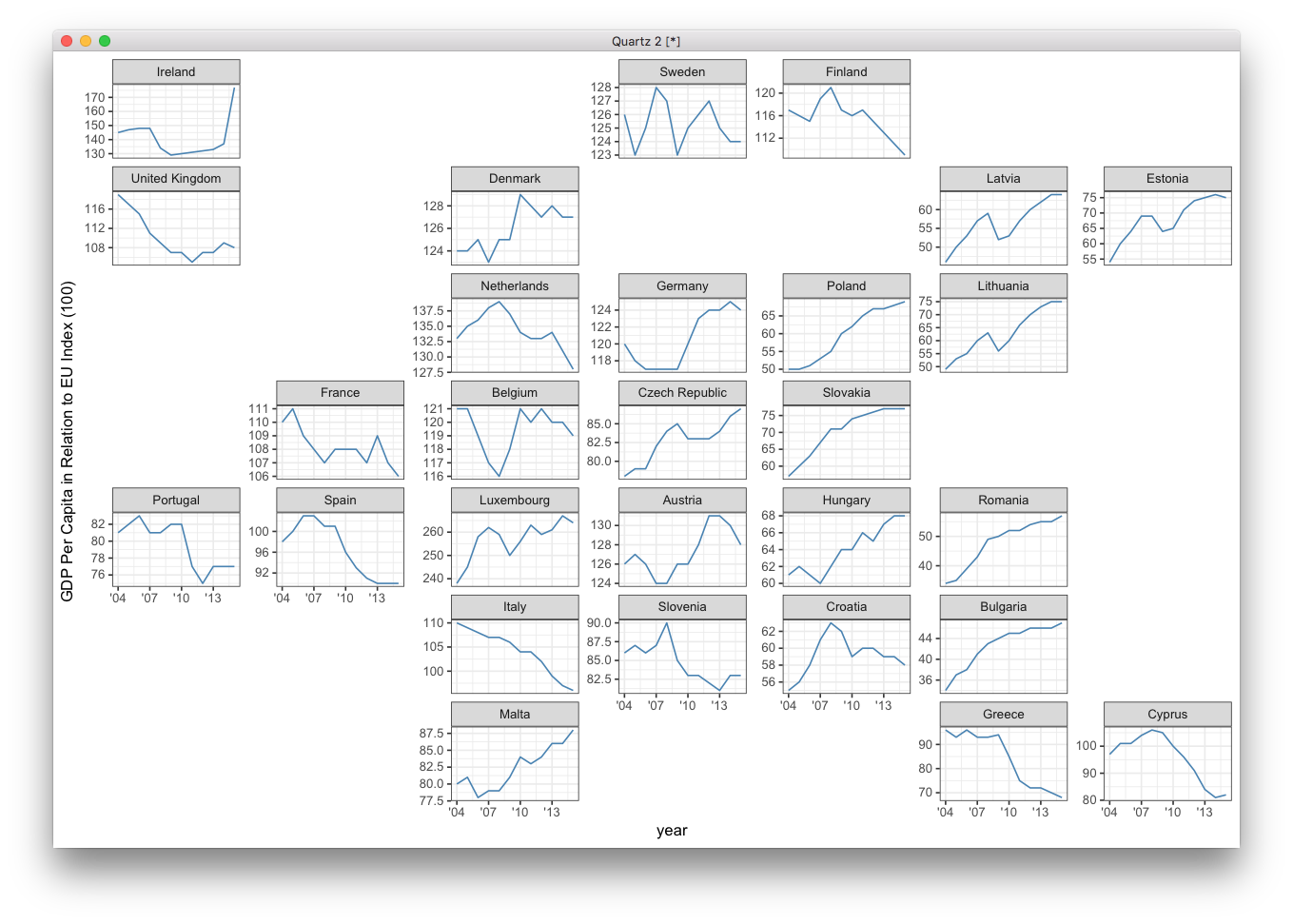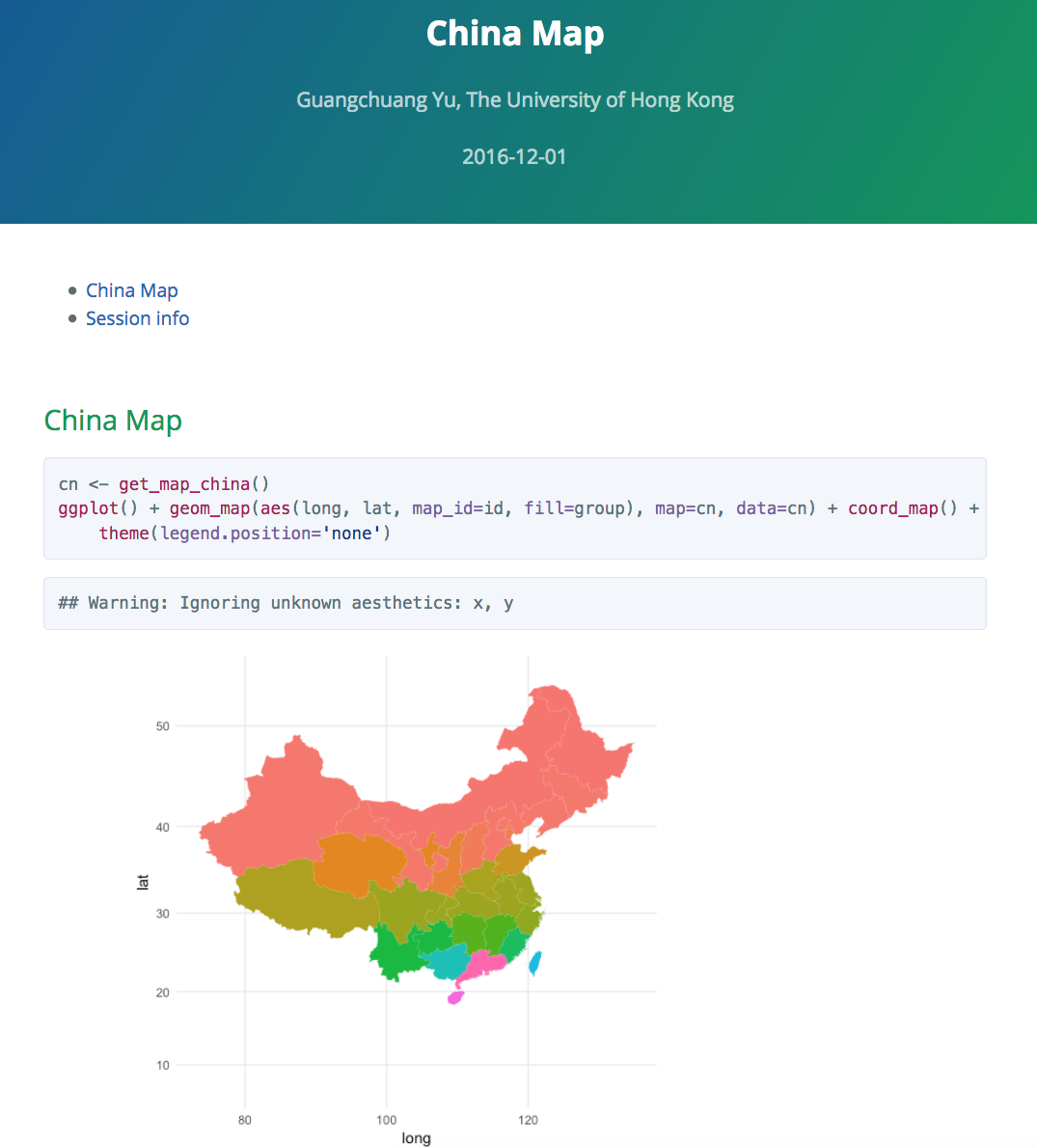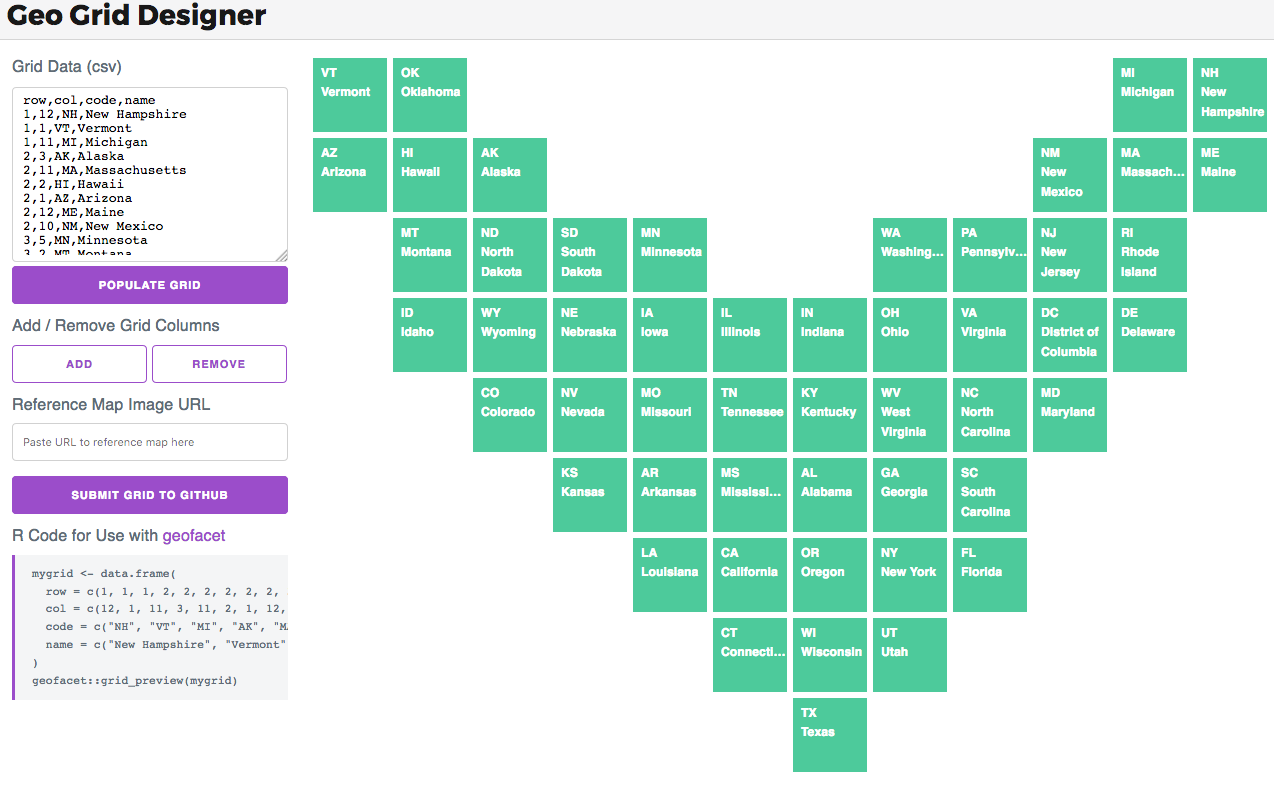按地理位置进行分面
CRAN刚上线的新包geofacet,可以让ggplot2分面按指定的地理位置来,比如下面的数据,美国各州各项指标的排名:
head(state_ranks)
state name variable rank
1 AK Alaska education 28
2 AK Alaska employment 50
3 AK Alaska health 25
4 AK Alaska wealth 5
5 AK Alaska sleep 27
6 AK Alaska insured 50
我们正常画图是这样子的:
ggplot(state_ranks, aes(variable, rank, fill = variable)) +
geom_col() +
coord_flip() +
theme_bw() +
facet_wrap(~ state)

这个geofacet包的引入了facet_geo,用法和facet_wrap一模一样,所以如果你会用facet_wrap分面的话,你已然会了:
ggplot(state_ranks, aes(variable, rank, fill = variable)) +
geom_col() +
coord_flip() +
theme_bw() +
facet_geo(~ state)

然后它还可以通过手工指定位置,比如下面这个:
head(us_state_grid2)
row col code name
1 6 7 AL Alabama
2 1 1 AK Alaska
3 6 2 AZ Arizona
4 6 5 AR Arkansas
5 6 1 CA California
6 5 3 CO Colorado
可以通过grid参数指定,label参数可以指定分面用什么变量来label:
ggplot(state_unemp, aes(year, rate)) +
geom_line() +
facet_geo(~ state, grid = "us_state_grid2", label = "name") +
scale_x_continuous(labels = function(x) paste0("'", substr(x, 3, 4))) +
labs(title = "Seasonally Adjusted US Unemployment Rate 2000-2016",
caption = "Data Source: bls.gov",
x = "Year",
y = "Unemployment Rate (%)") +
theme(strip.text.x = element_text(size = 6))

geofacet包里自带了一些geo grid信息:
> get_grid_names()
[1] "us_state_grid1" "us_state_grid2" "eu_grid1"
[4] "aus_grid1" "sa_prov_grid1" "london_boroughs_grid"
[7] "nhs_scot_grid" "india_grid1" "india_grid2"
[10] "argentina_grid1" "br_grid1"
比如我们用欧盟国家的位置来画它们的GDP:
ggplot(eu_gdp, aes(year, gdp_pc)) +
geom_line(color = "steelblue") +
facet_geo(~ name, grid = "eu_grid1", scales = "free_y") +
scale_x_continuous(labels = function(x) paste0("'", substr(x, 3, 4))) +
ylab("GDP Per Capita in Relation to EU Index (100)") +
theme_bw()

很可惜,没有中国各个省的位置信息,不过这个分分钟我们可以搞出来,我之前为了画中国地图,打包了个中国的地图信息(分省份,且有台湾)在chinamap包里,我们很容易通过这个data.frame生成一个各个省相对位置的grid表格来,大家可以试一下,或者等我什么时候有这个可视化的需求,我再来搞。

有grid信息之后,geofacet还支持通过拖拽来微调,这是用shiny写的:
grid_design()
比如我把美国地图拖成这样子:

然后拿它来可视化美国大选:
ggplot(election, aes(candidate, votes / 1000000, fill = candidate)) +
geom_col() +
scale_fill_manual(values = c("#4e79a7", "#e15759", "#59a14f")) +
facet_geo(~ state, grid = mygrid) +
coord_flip() +
labs(title = "2016 Election Results",
caption = "Data Source: http://bit.ly/2016votecount",
x = NULL,
y = "Votes (millions)") +
theme(strip.text.x = element_text(size = 6))
